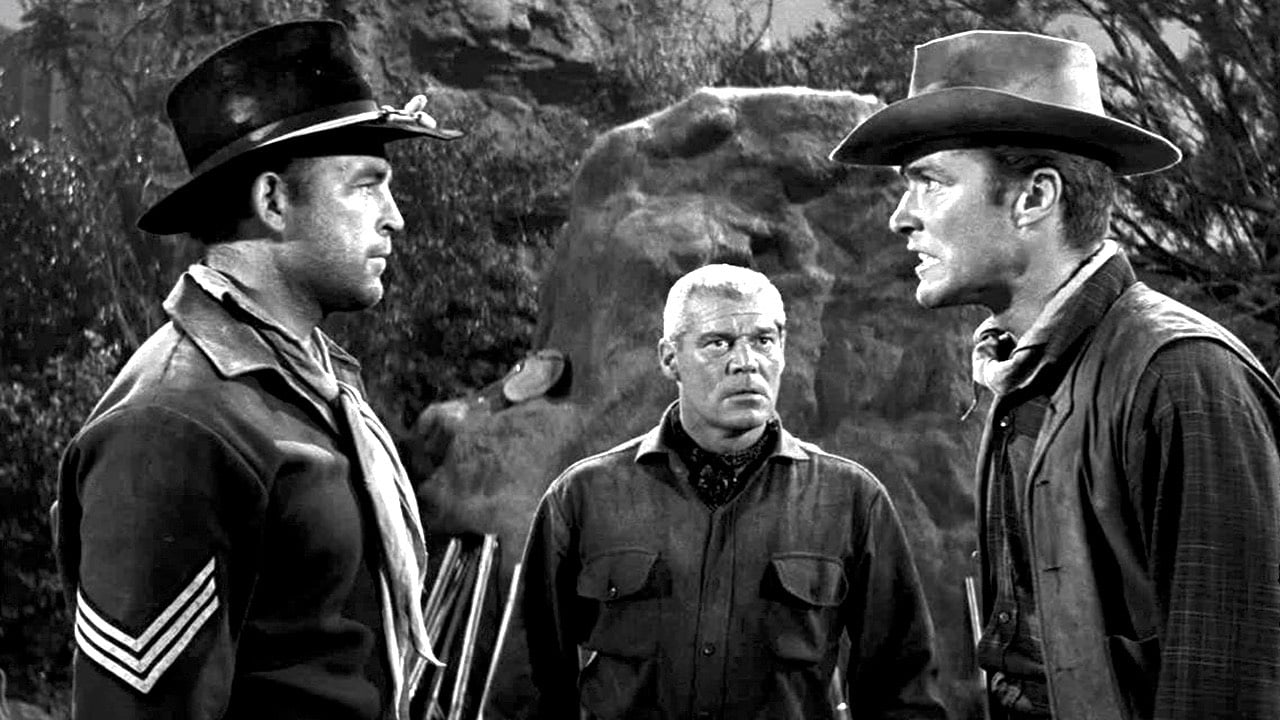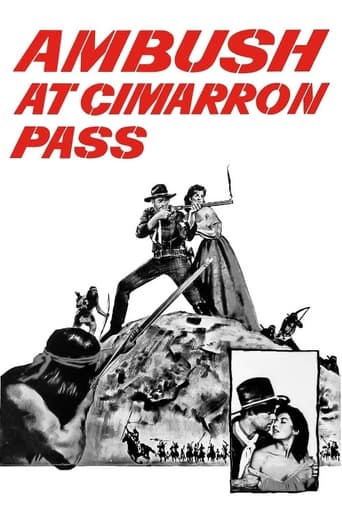


A Brilliant Conflict
... View MoreThe film makes a home in your brain and the only cure is to see it again.
... View MoreExcellent and certainly provocative... If nothing else, the film is a real conversation starter.
... View MoreYes, absolutely, there is fun to be had, as well as many, many things to go boom, all amid an atmospheric urban jungle.
... View MoreA Regal Films Production released by 20th Century-Fox. U.S. release: March, 1958. U.K. release: 13 April 1958. Australian release: 14th August, 1958. 73 minutes.SYNOPSIS: A Union patrol joins forces with a group of ex-Confederate soldiers to ward off an Apache attack.COMMENT: A typical RegalScope production: (1) It marks the directorial debut of a film editor,* which as usual turns out to be an inauspicious, unpromising and entirely disappointing debut. The direction, whilst not exactly inept, is as dull as all get-out and extracts every last grain of tedium out of the lethargically-staged proceedings. (2) The players are all afflicted with the B-grade shuffle in spades, moving at a tiresomely slow gait and speaking with plenty of pauses between words, and so spinning a 50-minute script out to 73 minutes without the producer having to go to the expense of employing an additional writer. This film has a distinct advantage over its stablemates in that the lead actress is supposed to be a Mexican and this gives her an excuse to hesitate twice as long between every word as the rest of the cast. (3) The script has a surfeit of feeble dialogue. There is not much action and what there is happens to be pretty tame. (4) The photography is flat and almost completely featureless. Gray tones are prominent and there is very little contrast. There is no such thing as a deep, rich black in a RegalScope film. (5) Production values are noticeably skimpy. The cast is fairly small, the sets are drab, the locations unattractive, the music score strictly routine and other production credits are totally undistinguished. One odd thing is that Regal films seldom, if ever, use any stock footage. So far as I know, all RegalScope films were photographed in black-and-white.
... View MoreBefore signing as ramrod Rowdy Yates in Rawhide, Clint Eastwood did a variety of films some of them better than others which if it weren't for his presence they would be obscure and forgotten. Ambush At Cimarron Pass falls in that category.What Eastwood has is star presence, you can absolutely tell this man was going to have a future in the movie business just looking at him. Not that his character was anything special, someone else described him as petulant and I'm inclined to agree.Sergeant Scott Brady and a small band of cavalry troopers are escorting Indian gun runner Breton Baynes and a lot of those valuable repeating rifles that he was about to sell to the Apaches. They run across a band of former Confederates, one of them being Clint Eastwood. Later on to make things interesting they pick up Margia Dean stranded out on the prairie courtesy of the Indians.After that it's just one western cliché after another, nothing terribly original, just the same plot situations that have been done a gazillion times before. Along with the Confederates is Irving Bacon who says he's a judge, Scott Brady doubts it, pretty soon everyone else is also. He's trying to save his own skin, but there seems to be no real rhyme or reason to his character at all. When he's killed nobody mourns.Other than it's listed in the body of work of a cinema legend, Ambush At Cimarron Pass would be lost to history. Clint Eastwood wishes it were.
... View MoreLet's face it - the only real reason to catch this pedestrian oater is to get a glimpse of a 27 year old Clinton Eastwood. The future star is still coltish in his acting craft here, and he hasn't fully developed his excellent timing and intensity as in "The Good, The Bad, and The Ugly" and "Dirty Harry", but the B western does show why this film was a good reason that he pursue acting. His scenes with Margia Dean are the best in showing a charisma which would one day make him box office.Made in 1958, Eastwood looks very youthful. He holds his own in scenes with a sturdy and sullen Scott Brady, and is somewhat confined by a script that has him cast as the young fool. But Eastwood does well with what he's got, and exhibits a star quality as a young Hollywood actor.
... View MoreVery low budget B-Movie. No surprise, no originality, no creativity, lots of cliche, but an honest sense of rythmn. We can almost see the paintings of the studio setting. One good reason to watch this is to see young Clint Eastwood before his cinema fame (circa 1965).
... View More